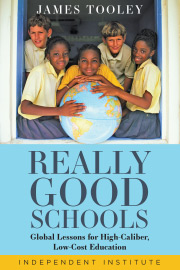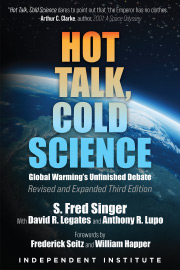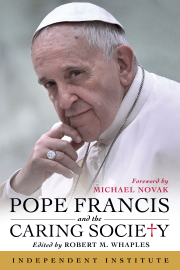Monetary Policy and Heightened Price Volatility in Raw Materials Markets
Despite the Fed’s breathtaking increase of base money since the autumn of 2008, the money stock as measured by conventional concepts such as M2 has not increased greatly, and hence, as ordinary quantity-theory-of-money thinking would lead us to expect, inflation as measured by conventional concepts such as the consumer price index (CPI) has been fairly tame during the past five years. Between December 2007 and December 2012, the CPI for all items increased only 9.3 percent. As the chart shows, this increase represented a continuation of a slow-but-steady inflation trend that extends back to the early 1980s.
This modest consumer-price inflation serves as one of the major bases for the Fed’s continued “quantitative easing” and the government’s ongoing “stimulus” spending. The idea is that because inflation seems so well contained, additional monetary ease, near-zero interest rates, and huge government deficits will affect primarily income and employment, rather than the price level.
This conventional macroeconomic thinking, however, by virtue of its highly aggregative view and its reliance on macroeconomic models with no place for capital, fails to alert policy makers to other effects—almost certainly pernicious effects—that their policies are creating.
One form of evidence of such effects appears in the asset markets, where the rate of price increase has been much greater than it has been in the markets for final consumer goods. As Austrian business cycle thinking suggests, these effects have been greatest in the markets for the goods most distant from final consumer products and services, especially in the markets for raw commodities.
As the chart shows, the producer price index (PPI) for crude materials has followed a quite different historical path from the CPI. Since World War II, it has passed through four distinct phases: I, no-growth stability from the late 1940s to the early 1970s; II, rapid increase in two bursts between 1972 and 1981; III, no growth (but with much greater variance than in phase I) between 1981 and 2001; and IV, rapid growth with even greater variance from 2002 to 2012.
Austrian thinking associates the rapid run-up of crude materials prices in phases II and IV with a flight from monetary assets, whose real values are falling or expected to fall. Investors seek the safe haven of real assets as the Fed engages in sustained easy-money policies. In addition, producers bid up disproportionately the prices of “early stage” goods required for undertaking the longer-term projects that artificially reduced interest rates encourage.
Whereas the CPI increased by 30.2 percent between December 2001 and December 2012, the PPI for crude materials increased by 166.4 percent during this period .
With the onset of the financial panic in the second half of 2008 and the economic contraction that accelerated between mid-2008 and early 2009, the PPI dropped almost by half. Since then, however, crude materials prices have increased relatively rapidly, rising by 58 percent between March 2009 and December 2012, far outpacing the increase in the CPI and maintaining a rate of increase comparable to that between 2002 and mid-2008.
Between the early 1980s and 2007, mainstream economists came to speak of a Great Moderation in business fluctuations and the rate of inflation. They spoke too soon, and they confined their view of price behavior too narrowly. Had they been alive to the importance of asset markets and to the link between monetary policy and price change in these markets, they might have noticed that all was no so well as they imagined when they heaped accolades on “the maestro” Alan Greenspan for having engineered this seeming conquest of inflation and produced this miracle of monetary micromanagement.
As anyone who ponders the movements of the PPI from the late 1940s to the present can see, things are currently far from placid on the price front. In the markets for raw materials, the past decade has been the exact opposite of a “great moderation,” and these wild swings have occasioned tremendous difficulties and required wrenching adjustments by many different kinds of producers. Yet scarcely have they made one adjustment when another one cries out for their attention. Such a violently variable, impossible-to-forecast price environment has necessarily brought about a greater volume of business mistakes and a heightened reluctance to embark on new enterprises and to make new long-term investments in existing firms. For such paralyzing uncertainty, we have policy makers at the Fed and in the federal government to thank.













